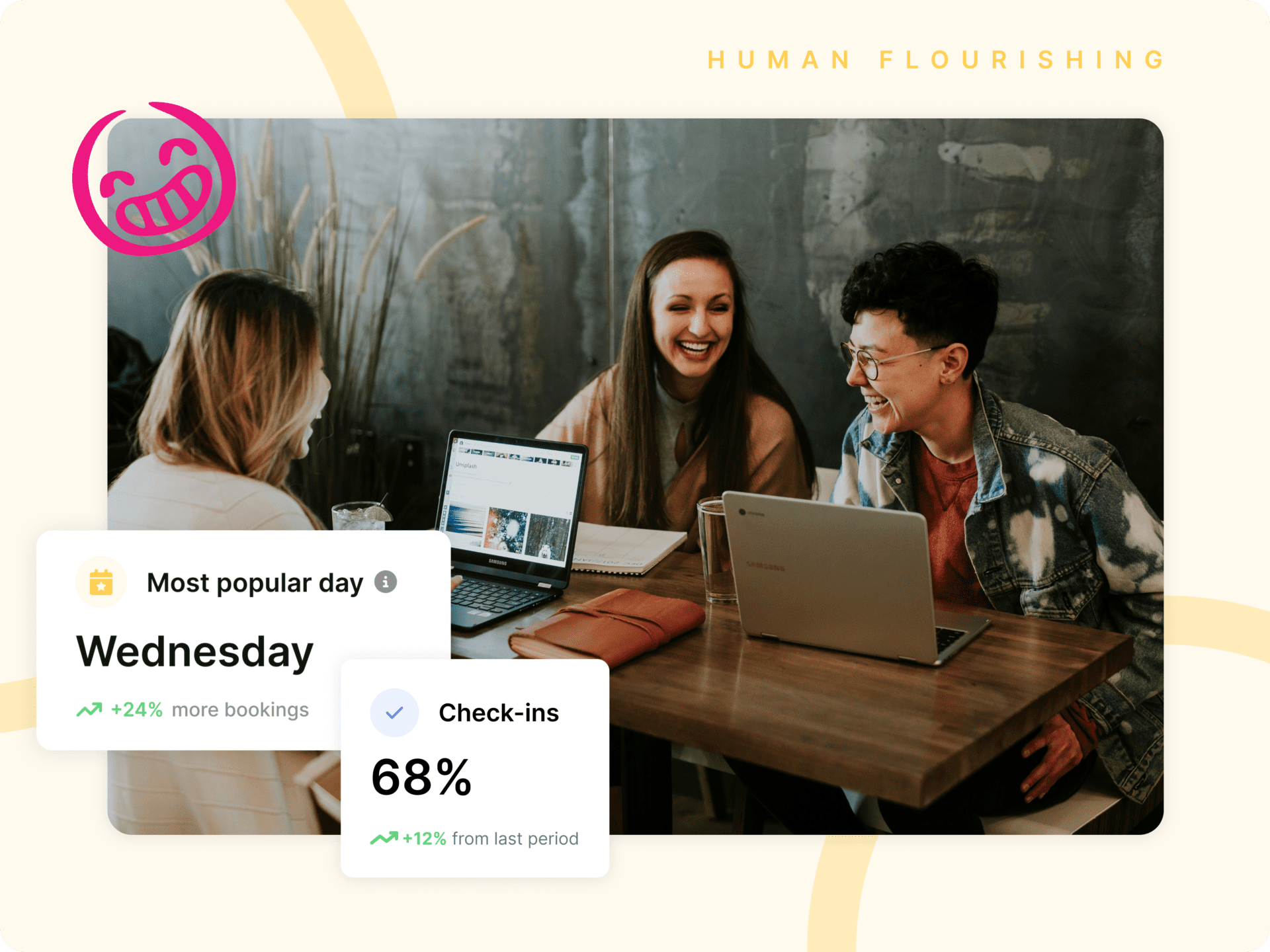5 reasons why hybrid work builds healthier communities
Business leaders contemplating the balance between remote and in-person work face an important question:
With so many moving parts, how can I ensure our company culture and community don’t suffer?
Unfortunately, the answer to this question won’t come overnight. The truth is — each company must come to its own understanding of how the implementation of hybrid work affects their workforce and culture.
One thing is for certain, though. When companies get hybrid right, it does more than just solve this one conundrum.
Let’s explore why Hybrid work is fundamental to building community in the modern workplace.
Hybrid work promotes meaningful connections and collaboration
As humans, we are deeply wired to rely on social interaction for our sense of fulfilment and happiness.
In the context of a recent societal shift towards more time spent alone, it’s more important than ever that the workplace acts a source of regular human contact in our daily lives.
Implementing a hybrid work system is fundamental to ensuring this regular contact. By encouraging the right balance of in-person and remote work, companies will reignite relationships that faded to the background during the pandemic, and bring a sense of community back to the workplace.
Choosing the right tool for hybrid work can go even further to ensuring that interactions between coworkers are both meaningful and productive. Kadence’s new Homepage feature helps you connect with the right people at the right times, showing you your team’s weekly schedule all in one place, and a breakdown of the specific teams and coworkers going in on each day.
Whether you’re missing those round-the-monitor chats, or sticky notes creative workshops, being in lockstep with your colleagues’ work Kadence will set you up for both meaningful social interactions and productive collaboration.
Hybrid communities are built on trust
The Hybrid Manifesto outlines trust as one of the four main pillars underlying Hybrid work. To word it even more strongly: trust runs deep in the DNA of hybrid organizations.
With unique insight into work schedules, habits and commitments, workers in hybrid teams are immediately rooted in an environment of transparency and openness.
This transparency and openness filters down to every aspect of a company’s internal communication. It strips away misunderstandings, builds cooperation and ensures that team coordination is an automatic feature of a company’s operations — not a separate, complex task of its own.
Community building — and strengthening social bonds — takes time. It requires incremental improvements to a large number of relationships within an organization.
Without a basic foundation of trust in the company, it will be even harder for these relationships to evolve. Implementing hybrid work effectively will set your team up for success from the get go.
Independence no longer needs to come at a cost
As mentioned before, the mass migration to remote work has had some significant side effects when it comes to mental health. A recent study by the Harvard Graduate Program found that 36% of Americans report “serious loneliness”.
One of the main benefits associated with remote work — independence and autonomy — seems to have come at the cost of basic, low-level satisfaction.
Hybrid work systems seek to address that toxic dynamic, by protecting one’s right to independence at the same time as enabling the right amount of social exposure.
The key to this? Knowing when it’s the right time to commute. Luckily, there are plenty of tools out there that can help you plan. Kadence’s User Homepage comes with smart recommendations that suggest optimal days to go into the office based on you and your starred colleagues’ schedules.
If a colleague cancels their booking at the last minute, Kadence will immediately send you notification letting you know — thus saving you a commute to the office that day.
Keeping markers in your week for when you are guaranteed a dose of social interaction is transformative to the feeling that you are master of your own autonomy — and not the other way around.
The perpetual cycle of flourishing
The success of a company is as much of an important factor in the health of its community as anything else.
A study conducted by PwC recently revealed that 57% of companies reported increased productivity after transitioning to a hybrid model. The message is laid out clearly: hybrid teams feel empowered to deliver results.
That’s because when employees thrive personally, companies experience the direct benefits — down to the bottom line. By offering great work-life balance, protecting mental health and reestablishing company culture, hybrid organizations maximize the chance that their employees remain happy.
In doing so, workers exist in a relationship with their company whereby one’s flourishing only enhances the other’s. A perpetual cycle.
Everyone is on the same page, all the time
One of the most powerful benefits of a Hybrid work model is the sheer force of alignment that it fosters between employees and the company.
When everyone knows the game plan — week in, week out — it means there is no doubt over the movement and direction of the company.
Imagine you load up your web browser at the beginning of your workday. Your first tab is the Kadence web app, a hybrid work tool that your company introduced at the beginning of the year. Its homepage displays an office activity graph, with bars for the activity of all teams relevant to you.
You feel like you are in an excellent position to execute on your tasks and goals for the week ahead. Wednesday would be the optimal day for you to collaborate with the design team on those upcoming user interviews, while it seems like Friday would be great to catch up with the engineers on some questions regarding your user stories.
The power of alignment cannot be understated when it comes to building a healthy, successful community. Hybrid teams know this because they’ve learned it from experience.
This piece began as a challenging question that business owners face when it comes to organizing their teams and establishing community. We hope we’ve persuaded you that Hybrid work — with its inherent focus on trust, alignment and the wellbeing of employees — is the first step towards answering that question. We also hope that you’ve seen how adopting the right hybrid tools will ensure that the community you set about building in your company is strong, effective and healthy.
If you’d like to read more about how Kadence’s new Homepage feature can help you coordinate your team, please check out the post here.


